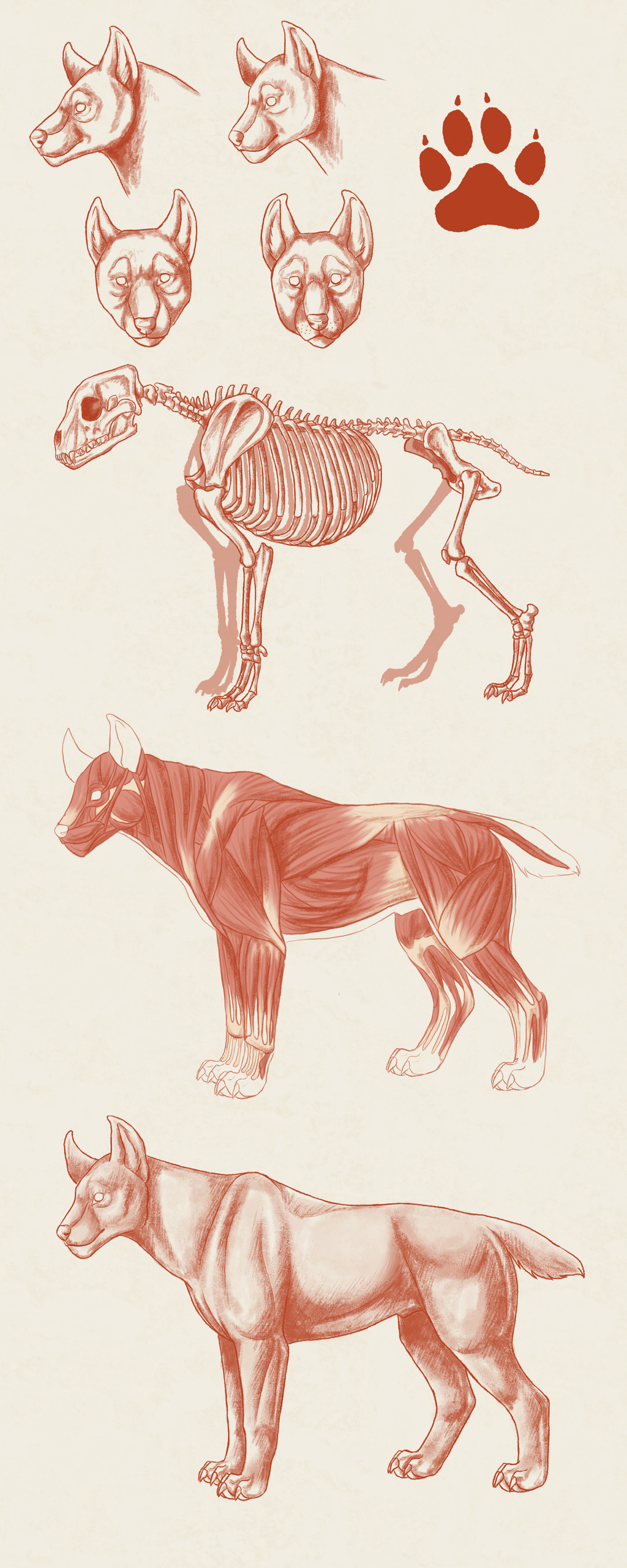HOME | DD
 Lioless — Mirakki: Pariah Anatomy
Lioless — Mirakki: Pariah Anatomy

#anatomy #breed #sheet #mirakki
Published: 2016-08-10 20:29:59 +0000 UTC; Views: 568; Favourites: 3; Downloads: 0
Redirect to original
Description
All rights reserved, no copying, tracing, reuploading or any other form of useage allowed.
Mirakki as a species (c) lemonyh & ThatDenver
Artwork (c) lemonyh
Mirakki are large creatures that resemble canines, but are in fact not related to any animals on earth. On closer inspection, they share similarities with felines and equines as well as canines, but due to their appearance, people usually call them “dogs”.
There are three breeds of Mirakki: Knight, Pariah and Prince. These names are loose translations of their original, alien names.
Physical characteristics: Pariahs are medium-sized dogs with square body shape. They have strong necks and well-developed forequarters with deep chest and medium tuck-up. They stand well on their pads and should always appear balanced. There should be little to no loose skin. The head is wide and moderate in depth, with gaunt and expressive face. The muzzle is well-developed and does not greatly diminish in width from root to nose. Eyes are medium-sized and almond shaped. The ears are very large in size and rounded, slightly tilting inwards at their tips. The back is moderately sloped and muscular with rounded rump and medium-length loin.
The neck is strong and muscular, appearing fairly strong and always proportionate in size with the head. The withers are higher than the croup, ascending to a fairly straight and strongly developed back. Shoulder is long and steep, with well-built muscle. Forelegs are straight viewed from all sides, with fairly long pastern. The paws are solid and moderate in size with gentle arching of the paws. The thighs are well-muscled in both upper and lower thigh. Upper thigh should parallel the shoulder blade while lower thigh should parallel the forearm. Distance between the hock and the paw is fairly short and the back legs have pronounced angles in general.
Females are noticeably larger, more muscular and broad than males. Males are more small and petite.

























